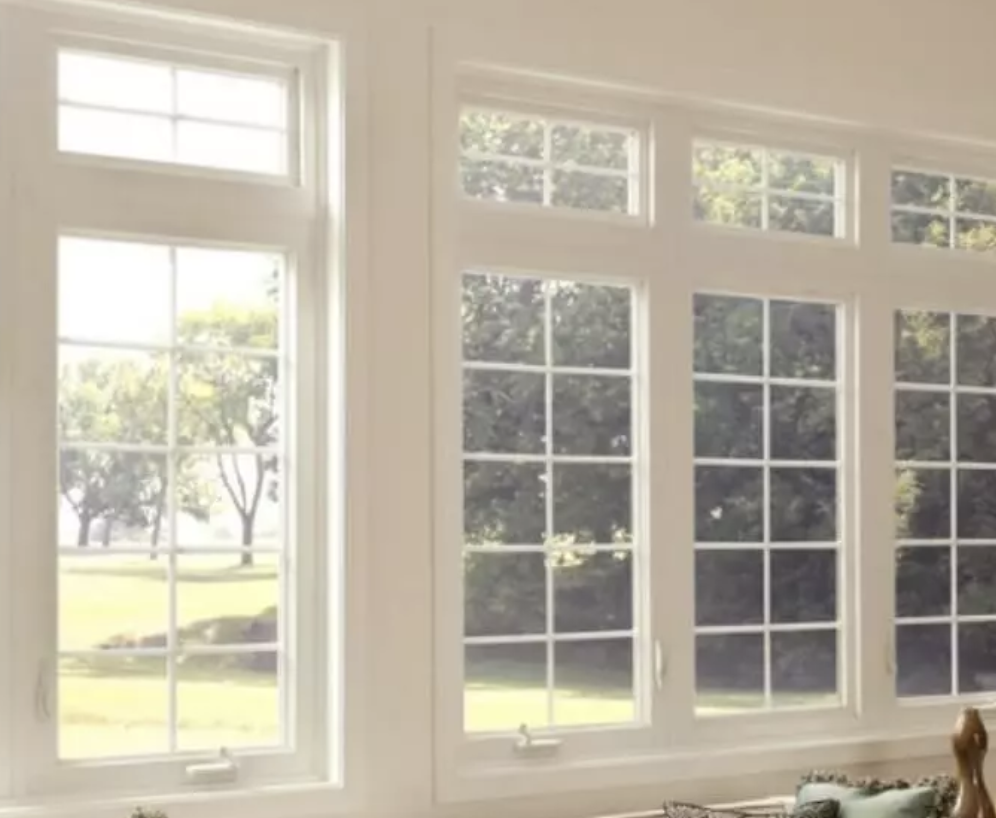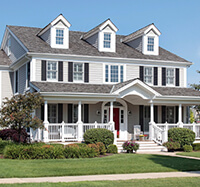
Upgrade Your Home with Energy-Efficient Replacement Windows
A window sash is a critical component of a window frame, and it plays a key role in the overall functionality and performance of the window. The window sash is the part of the window that holds the glass in place and is movable, allowing it to be opened or closed. It is the moving part of the window that contains the glass panes and is fitted into the window frame.
Here are some key points about window sashes and their importance:
-
Support for Glass Panes: The window sash provides structural support for the glass panes, holding them securely within the window frame. This helps maintain the integrity of the window and prevents the glass from falling out.
-
Airtight Seal: When the window sash is closed, it forms a seal with the window frame. This airtight seal is crucial for energy efficiency, as it helps prevent drafts and the exchange of air between the interior and exterior of a building. A well-sealed window can contribute to better insulation and reduced energy costs.
-
Security: A properly functioning window sash is essential for the security of a building. When closed and locked, it acts as a barrier, helping to deter unauthorized entry.
-
Ventilation: The ability to open and close the window sash allows for controlled ventilation. Opening the sash allows fresh air to enter the space, while closing it helps regulate the airflow and temperature.
-
Ease of Operation: Modern window designs often include features that make opening and closing the window sash easy and smooth. This is important for the convenience and usability of the window.
-
Aesthetic Considerations: The design and style of the window sash can contribute significantly to the overall appearance of a window and, by extension, the aesthetic appeal of a building. Different types of window sashes, such as double-hung, casement, or sliding, have distinct visual characteristics.
In summary, a window sash is a fundamental part of a window that contributes to its structural integrity, energy efficiency, security, ventilation, and overall aesthetics. It is a dynamic element that can be opened or closed to meet the varying needs of occupants, making it a crucial component in both residential and commercial buildings.
The window sash is a key component of a window, and it consists of several parts that work together to provide functionality, support, and sealing. The specific parts of a window sash can vary depending on the type and design of the window, but here are common elements:
-
Stiles:
- Vertical components of the window sash that run along the sides.
- Stiles provide structural support to the sash.
-
Rails:
- Horizontal components of the window sash that run along the top and bottom.
- Rails, like stiles, contribute to the overall structure of the sash.
-
Check Rails:
- In double-hung windows, the upper and lower sashes meet at the check rails when the window is closed.
- Check rails help create a seal and prevent air and water infiltration.
-
Meeting Rail:
- The horizontal rail where the upper and lower sashes meet in a double-hung window.
- It contributes to the overall stability and alignment of the window.
-
Muntins or Mullions:
- Muntins are the strips of material (wood, metal, or other) that divide the glass panes within a single sash.
- Mullions are similar strips that divide adjacent sashes in multiple-sash windows.
-
Glass Panes:
- The transparent or translucent part of the window that allows light to enter.
- Glass panes are held in place by the sash and contribute to the window's overall insulation.
-
Sash Cords or Balancers:
- In double-hung windows, sash cords or balancers are mechanisms that assist in the smooth operation of raising and lowering the sashes.
-
Hardware:
- Includes locks, latches, handles, and other components that allow for the opening, closing, and securing of the window.
-
Weatherstripping:
- Sealing material applied to the meeting rails and other parts of the sash to create an airtight seal when the window is closed.
- Weatherstripping helps prevent drafts, water infiltration, and improves energy efficiency.
-
Pulleys and Weights (in traditional double-hung windows):
- In older double-hung windows, a system of pulleys and weights is used to counterbalance the sashes, making them easier to lift and lower.
-
Sash Lifts or Handles:
- Handles or lifts are used to assist in the manual operation of sliding or lifting the sash.
-
Jamb Liner or Track (for sliding windows):
- In sliding windows, the sash moves along a track or jamb liner, which helps guide and support its movement.
These parts work together to enable the window sash to perform its functions, including opening and closing, providing ventilation, maintaining an airtight seal, and contributing to the overall aesthetic of the window. The specific design and configuration of these parts can vary based on the type of window and its intended purpose.
A window sash is important for several reasons, contributing to the overall functionality, efficiency, and aesthetics of a window. Here are key reasons why a window sash is important:
-
Structural Integrity: The window sash provides structural support to the window frame. It helps hold the glass panes in place and contributes to the overall stability and strength of the window structure.
-
Weather Resistance: When closed, the window sash forms a seal with the window frame, preventing the entry of external elements such as rain, wind, and snow. This weather resistance is crucial for maintaining a comfortable and dry interior environment.
-
Energy Efficiency: A well-designed and properly sealed window sash helps improve energy efficiency by preventing drafts and minimizing heat transfer between the interior and exterior. This can lead to reduced energy consumption and lower heating and cooling costs.
-
Ventilation Control: The window sash, when operable, allows for controlled ventilation. Opening the sash enables fresh air to enter the space, contributing to indoor air quality and comfort. The ability to regulate ventilation is essential for occupants' well-being.
-
Security: When closed and locked, the window sash acts as a barrier, enhancing the security of a building. It deters unauthorized entry and helps protect the occupants and their belongings.
-
Ease of Use: Modern window designs incorporate features that make opening and closing the window sash easy and smooth. This ease of operation is important for the convenience and usability of the window.
-
Aesthetic Appeal: The design and style of the window sash contribute to the overall aesthetic of the window and, by extension, the building. Different types of window sashes, such as double-hung, casement, or sliding, have distinct visual characteristics that can enhance the architectural appeal.
-
Natural Light: The window sash holds the glass panes, allowing natural light to enter the interior space. This is crucial for creating a well-lit and inviting atmosphere.
-
Regulation of Airflow: Opening and closing the window sash allows for the regulation of airflow. This is particularly important in climates where natural ventilation is desirable.
-
Preservation of Historical Character: In historical or architecturally significant buildings, the window sash is often a key element in preserving the original character and design of the structure.
In summary, the window sash is a multifunctional component that plays a crucial role in the overall performance and appearance of a window. It contributes to structural integrity, weather resistance, energy efficiency, security, ventilation, and aesthetics, making it an essential part of both residential and commercial buildings.




